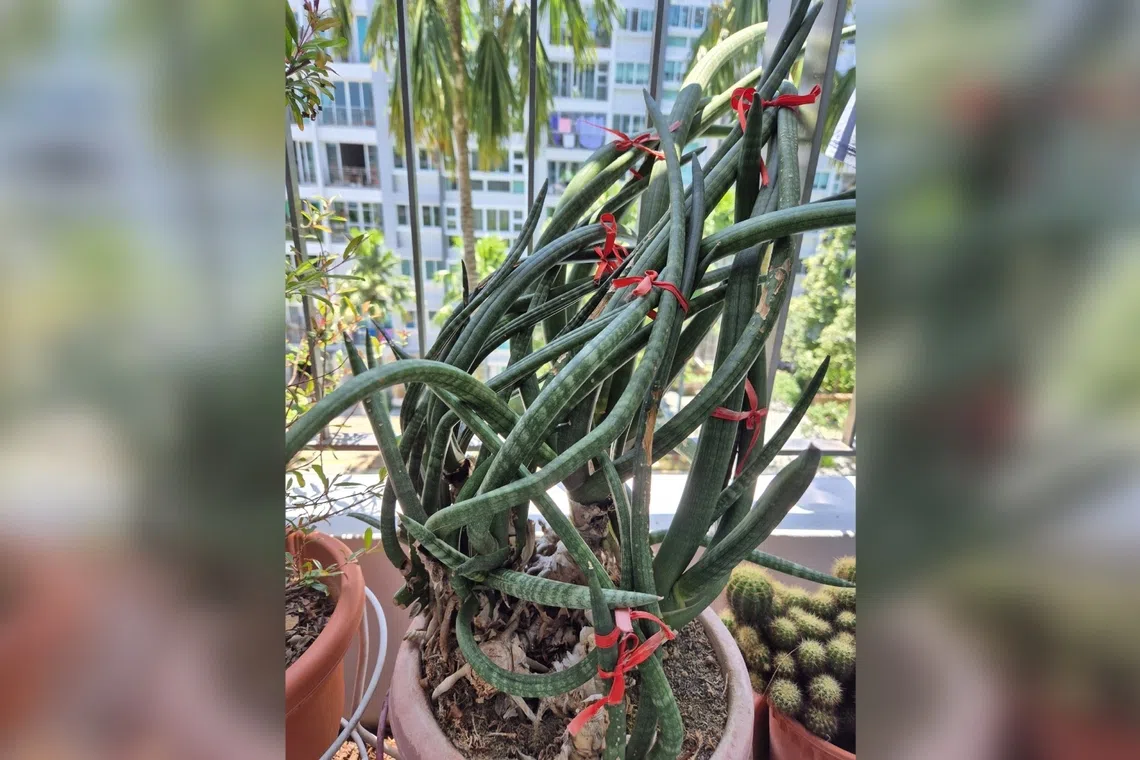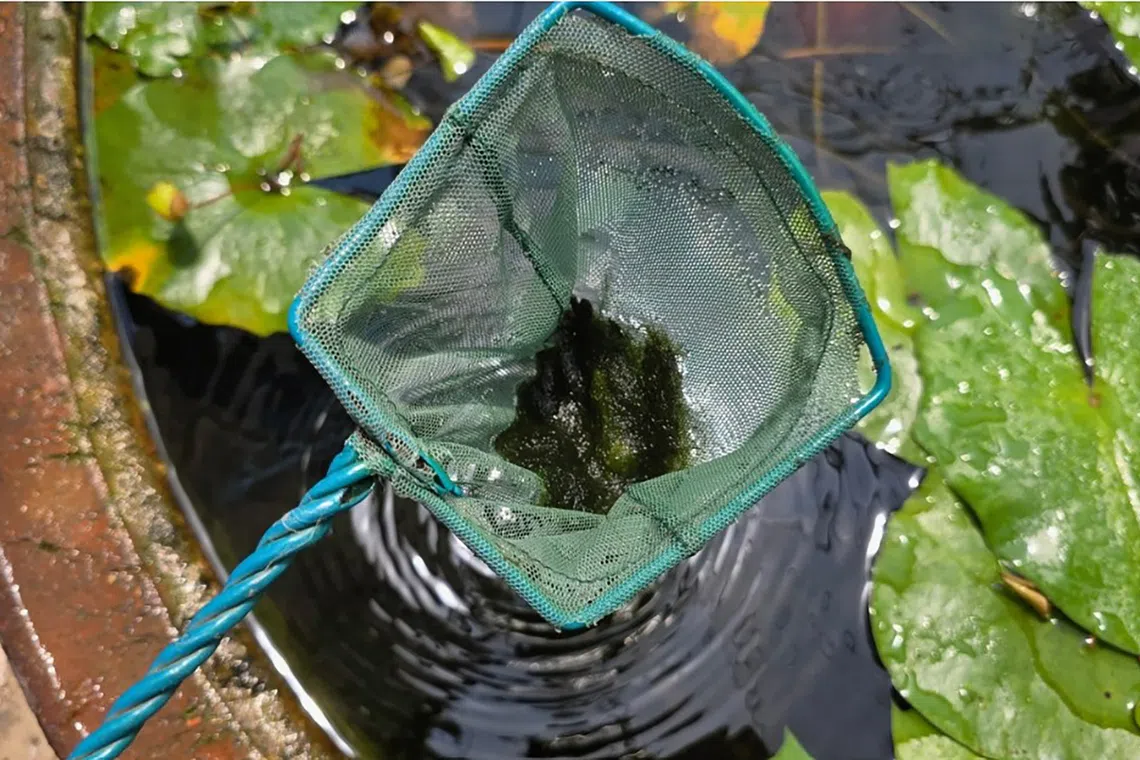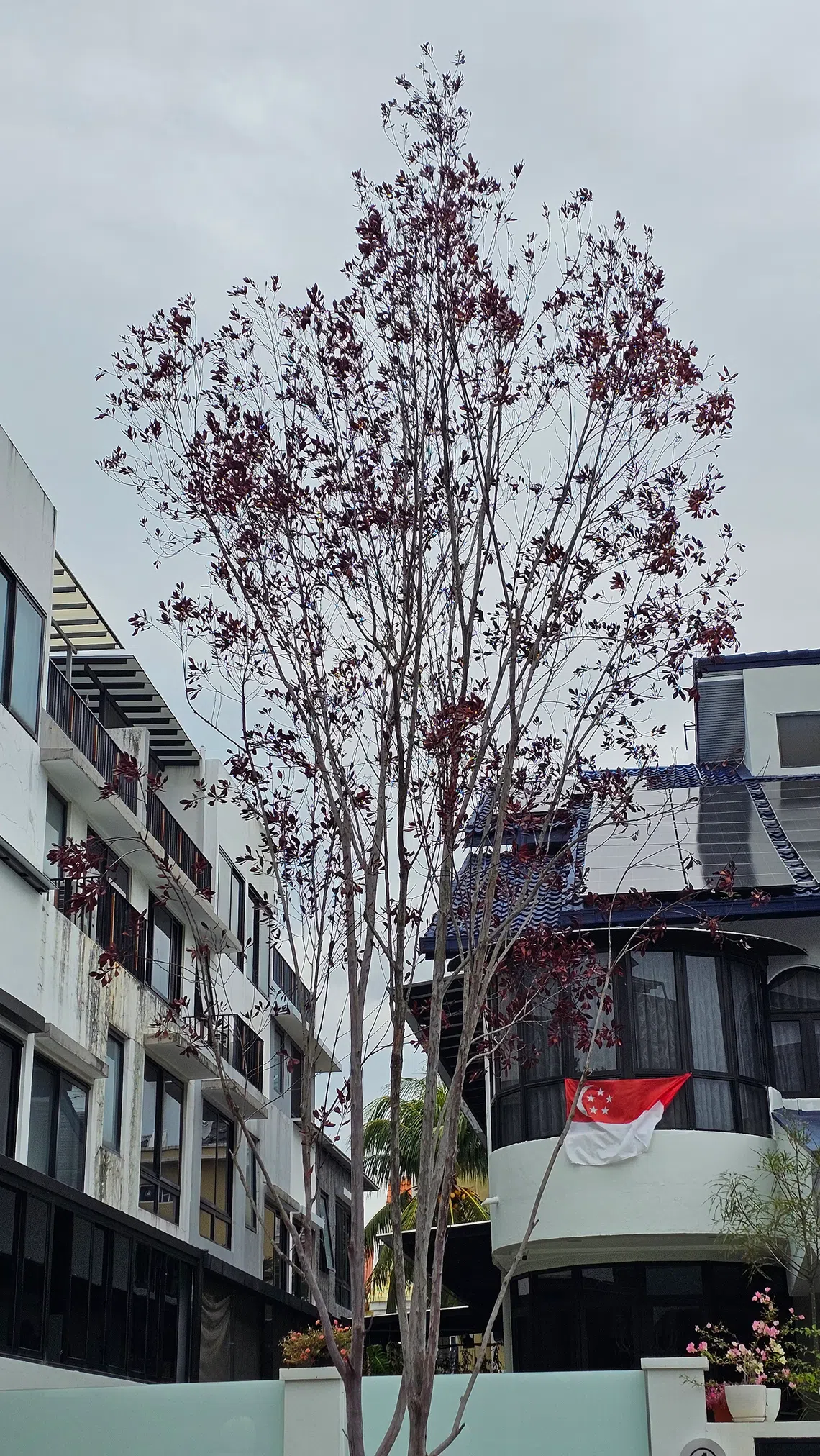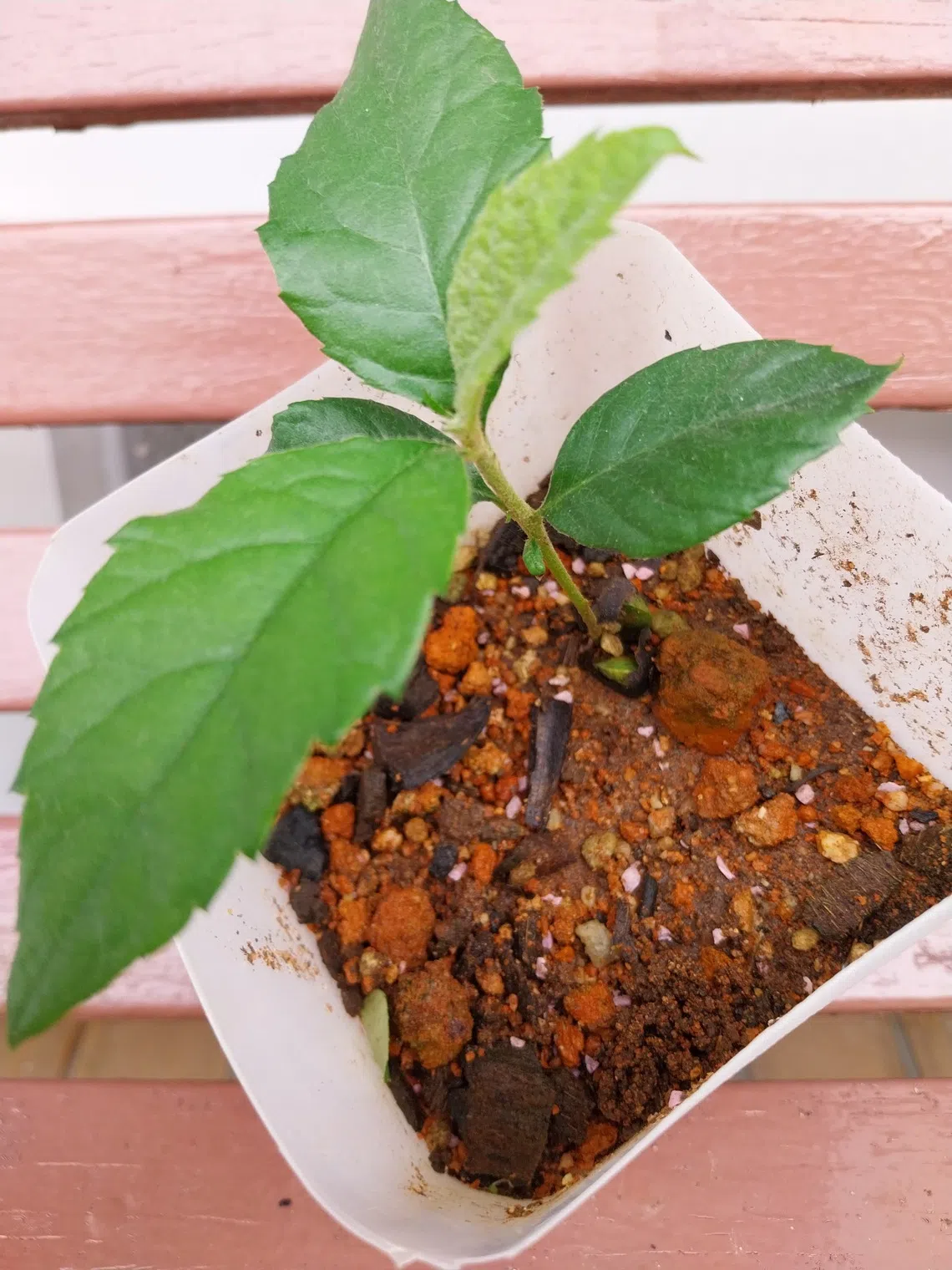Root Awakening: Do not let Dracaena dry out
Sign up now: Get ST's newsletters delivered to your inbox

This plant should get at least six hours a day of filtered sunlight.
PHOTO: ONG KIAN KIE
Wilson Wong
Follow topic:
Plant’s twisted look could be due to lack of light
I have had this plant for years and it has blossomed with white flowers in the past. However, it has stopped producing flowers and its new shoots are thin. What plant is this and how do I care for it?
Ong Kian Kie
This plant is a type of Sansevieria, which has recently been reclassified as Dracaena by botanists. There are many similar-looking plants, so it is not possible to pinpoint the exact cultivar or species without more information.
Give this plant at least six hours of filtered sunlight a day. Under the right light conditions, each of its leaves should be straight and stiff. Your plant’s twisted look could be due to a lack of light or a change in light direction, as the plant will grow towards the light no matter what position it is placed in.
Although it is a drought-tolerant plant, do not let it dry out. Your plant’s leaves indicate a lack of water. Depending on its growing conditions, it should be watered at least weekly.
It also appears that you have multiple plants in the same pot. Consider dividing and repotting them individually.
Common medicinal plants

(From left) The Bitter Leaf, dogfennel and The Cat’s Whiskers Plant.
PHOTOS: ELENA CHAN
What are these plants and are they edible?
Elena Chan
The first plant is the Bitter Leaf or South African Leaf (Gymnanthemum amygdalinum). It grows into a large woody shrub. It is believed to have anti-cancer, anti-diabetic and anti-inflammatory properties.
The second plant is the dogfennel (Eupatorium capillifolium). It is frequently mistaken for the dill herb (Anethum graveolens). Do not eat it, as it may contain pyrrolizidine alkaloids that are toxic to the liver.
The third and final potted plant is a Cat’s Whiskers Plant (Orthosiphon aristatus). Its stretched appearance indicates a lack of light. This plant has reportedly been used to treat diabetes.
Always consult a professional before using medicinal plants to treat any ailments.
Reduce light, grow floating plants to deal with algae

High water temperatures and light levels are conducive for algae growth.
PHOTO: ADRIAN LING
How do I treat algae growth in my lotus pond?
Adrian Ling
It is not unusual to find algae growing in small water bodies exposed to sunlight. High water temperatures and light levels are conducive for algae growth in water with nutrients.
You may want to grow smaller floating water plants in the same pot, which can help to absorb excess nutrients, as well as provide shade to reduce light penetration and water temperature. Any overgrown plants can be removed periodically and composted.
Filling the container with fresh water on a regular basis can help to remove excess nutrients and add fresh dissolved oxygen.
Tree may be dead

Scratch the surface of the trunk and other branches to see if is green beneath.
PHOTO: ER CHIANG KAI
The leaves of this tree have been red for months. What tree is this and is it still healthy?
Er Chiang Kai
The tree could be a Sea Tristania (Tristaniopsis obovata). Check whether the leaves and branches are dry – they will crumble or snap easily. Scratch the surface of the trunk and other branches to see if it is green beneath. If all parts of the tree are dry and brown, the tree may already be dead and should be removed.
Potted plant may be loquat

The plant will grow into a tree that will flower in Singapore, but has not been observed to fruit in our climate.
PHOTO: LILIAN QUEK
What is this plant and is it edible?
Lilian Quek
The seedling may be a loquat (Eriobotrya japonica). However, without seeing its fruit and flowers, its identity cannot be confirmed. Always label your potted plants.
The plant will grow into a tree that will flower in Singapore, but has not been observed to fruit in our climate.
Answers by Dr Wilson Wong, an NParks-certified practising horticulturist and parks manager. He is the founder of Green Culture Singapore and an adjunct assistant professor (Food Science & Technology) at the National University of Singapore.
Have a gardening query? E-mail it with clear, high-resolution pictures of at least 1MB, if any, and your full name to . We reserve the right to edit and reject questions.

